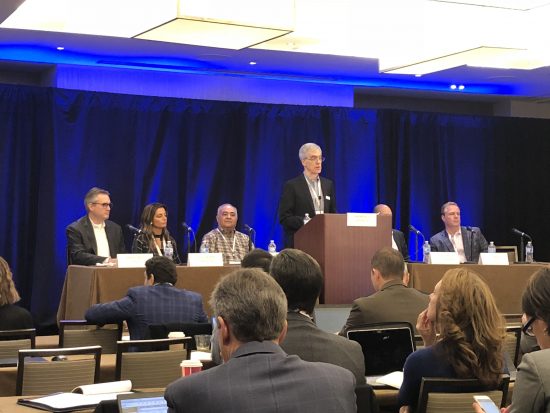































Over the past several weeks my team and I had the pleasure of engaging with Cisco's cable and media customers at several industry venues, each of which will help lead the industry to a new world of possibility. I personally spent some very productive time at Cisco's annual partner summit in Las Vegas. And my colleague Andy Smith, Chief Architect for Cable at Cisco, was a participant at the Light Reading Future of Cable Business Services conference in New York, where Cisco was a platinum sponsor.
Let's start with the Partner Summit. It is a large gathering - 4,000+ attendees, from all over the globe, for four days. This is a critically important group, as much of what Cisco develops is sold around the world through partner channels. We are especially proud of our cable channel partners as they grow their business using Cisco channel facilities. Thanks to Comcast, for paving the way with our Meraki portfolio, for small business WiFi! A win-win for all involved, and we have a fun look at the Partner Summit in this video.
I was unable to attend the Light Reading "Future of Cable Business Services" conference in New York, but I did talk to Andy about it. An excerpt of our chat follows.
Me: How'd it go today?
Andy: It was good. I participated on a panel focused on DOCSIS 3.1 and what comes next for commercial services. I advocated that as we build out next generation cable networks, and modernize the coax last mile with technologies like Remote PHY, that we can start to consider offering SLA (service level agreement) and higher caliber data services over that infrastructure. I used the example that DOCSIS 3.1 and Full Duplex DOCSIS puts the cable operator in a prime position to aggregate mass numbers of 5G small cells, for example.
Me: How was the message received?
Andy: Overall really well. People understand that the coax last mile isn't going away, and that we can modernize it to keep it relevant. But it will also be a multi-modal world -fiber to the premises will be a factor, along with evolving forms of distributed cable access. The major point was that as the industry modernizes its access network, it can and should be multi-purpose. It doesn't have to be single-purpose. In a residential v. commercial/enterprise sense.
 Andy Smith seated far left on a panel at the "Future of Cable Business Services" conference in New York
Andy Smith seated far left on a panel at the "Future of Cable Business Services" conference in New YorkMe: How did you make the case for residential DOCSIS, compared to enterprise DOCSIS?
Andy: There is only one DOCSIS, but, as the length of coax needed to implement becomes shorter -as fiber goes deeper -the capacity and reliability of DOCSIS goes up. This benefits both commercial and residential services equally. We are setting the stage for a new level of service convergence, operational efficiency and revenue generation for our cable partners.
...Ok so that's the excerpt. A "commercial-grade DOCSIS" is a real thing. A big deal, as service providers seek ways to equalize the consumer shifts between subscription video and broadband services. What it means is that even as fiber goes deeper, there's a whole lot of runway for that coaxial last mile.
And, ironically or not, that coaxial last mile, just as it's being augmented by fiber, may be an ideal conduit for 5G front-haul. And that all seems like a lot to be thankful for! Forward momentum, over what's already there.
With that, thanks for indulging me my post-Thanksgiving roundup of a few trends that seem important. And now to get ready for CES ... !
 Etiquetas calientes:
Cisco Partners
Cable de cable
remote phy
docsis 3.1
Full-Duplex DOCSIS
Business Services
FOCBS2018
Light Reading. FOCBS
Etiquetas calientes:
Cisco Partners
Cable de cable
remote phy
docsis 3.1
Full-Duplex DOCSIS
Business Services
FOCBS2018
Light Reading. FOCBS